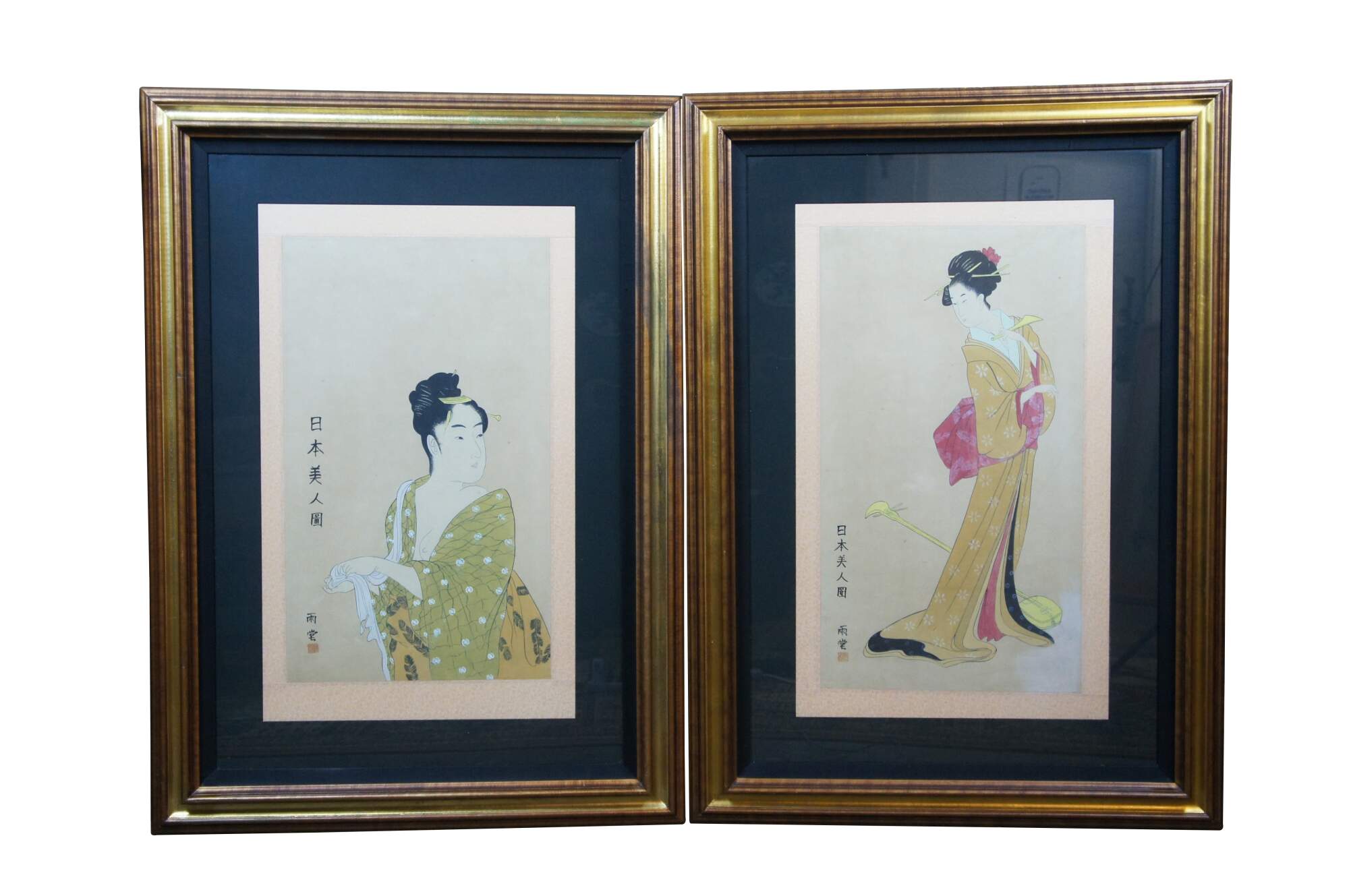
Shipping:
Free Shipping Included
Delivery:
Estimated 2-15 Business Days
Payments:
Credit Card, Check, Cash, PayPal, Apple Pay, Venmo
Returns:
30 Days 100% Money Back Guarantee, Buyer Pays Return Shipping
Description
Pair of 20th century Japanese Ukiyo-e style woodblock prints after works by Hosoda Eishi and Utagawa Kitamaro. The first depicts "Itsutomi " from Hosoda Eishi's series Selected Geishas from the Pleasure Quarters, showing a slender geisha in gold and red, with a shamisen (stringed instrument) at her feet. The second depicts "The Fancy-free type"(aka Coquette - Uwaki no so), from Utagawa Kitamaro's series Ten Types in the Physiognomic Study of Women (Fujin sogaku juttai), from ca. 1792-3, showing a waist up portrait of a woman in green and gold, her kimono slipping coquettishly off one shoulder, revealing a breast. Two tone beveled giltwood frame; black mat with peach floral silk border.
"Chobunsai Eishi (1756-1829), also known as Hosoda Eishi, was an ukiyo-e artist of the Edo period. He was born to a samurai family. In his earlier works influences from Torii Kiyonaga's bijinga can be seen. Unlike Kitagawa Utamaro, who was active at the same time, Eishi's female appears more slender and idealized image of women in the yuri (gay quarters). He is known as a master full-length bijinga. Itsutomi was a geisha from the Yoshiwara (pleasure district in present Tokyo). The slender Itsutomi is depicted with shamisen, three-stringed Japanese musical instrument." (Source: Yunomi)
"Kitagawa Utamaro (Japanese: 喜多川 歌麿; c. 1753 - 31 October 1806) was a Japanese artist. He is one of the most highly regarded designers of ukiyo-e woodblock prints and paintings, and is best known for his bijin ōkubi-e "large-headed pictures of beautiful women" of the 1790s. He also produced nature studies, particularly illustrated books of insects. Little is known of Utamaro's life. His work began to appear in the 1770s, and he rose to prominence in the early 1790s with his portraits of beauties with exaggerated, elongated features. He produced over 2000 known prints and was one of the few ukiyo-e artists to achieve fame throughout Japan in his lifetime. In 1804 he was arrested and manacled for fifty days for making illegal prints depicting the 16th-century military ruler Toyotomi Hideyoshi, and died two years later. Utamaro's work reached Europe in the mid-nineteenth century, where it was very popular, enjoying particular acclaim in France. He influenced the European Impressionists, particularly with his use of partial views and his emphasis on light and shade, which they imitated. The reference to the "Japanese influence" among these artists often refers to the work of Utamaro." Source: askART)
Condition
Very Good
Dimensions
31" x 2" x 43" / Sans Frame - 15.5" x 26" (Width x Depth x Height)